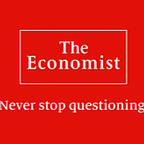Twitter Blue? Economists have a name for that.
You will have no doubt seen that Elon Musk (the world’s richest man) has bought Twitter for the sum of $44bn (about £40bn).
One of his first moves was to fire most of his Board — thus getting rid of the principal agent problem.
A second move has been to propose to introduce a subscription for what might be called professional users (or that Twitter calls, the most engaged people) on Twitter. One reason Musk might want to do this is the simple fact that, however popular Twitter may be, it hardly ever makes a profit — as the below table shows. Over the last ten years, Twitter only made a profit in two. In 2021 its loss was $221 million. Musk didn’t become rich by making a loss, and he needs to repay his creditors. One way he can bring Twitter into the black is by raising the revenues it generates, and one way to do this is to extract money from its actual users. The group Musk is proposing to target are those people and organisations that benefit from a blue tick that validates that they are the authentic account listed.
Is the move to charge users for (premium) Twitter, a good one? Afterall, we are used to having access to social media for free. In the early days of WhatsApp there was talk of a charge but that soon disappeared.
This is not a new idea — LinkedIn, Spotify and YouTube all have charges for premium content. Even Coffee has a subscription model! As we spoke about here: The Price of Prets.
There was much uproar — yes, on Twitter, with many claiming that they would leave Twitter rather than pay to use it. And in fact there is an argument to say that it is the users who provide the content so Twitter should actually pay users!
But all this free social media has a value and Elon Musk is, as any business owner, absolutely right to try and extract some of this value, from consumers, to his company.
As a customer, when you purchase a product, the price you pay for the product is more or less equal to the value, or utility, you get from having the product. So when I buy my favourite coffee from my favourite coffee shop, and hand over £3.50 for (an ever shrinking) flat white with oat milk, it must be the case that I value the product at £3.50 at least. Otherwise why would I handover quite so much money?
But sometimes the price I pay might be less than that which I am willing to pay. Consider when you find a bargain on Amazon or pay for a low cost flight — “wow that’s so cheap” you say. You may have been willing to pay £200 to get to your summer sun destination, but EasyJet charge you only £100. This difference — between the price you were willing to pay and the lower price you actually pay, is called Consumer Surplus. It’s the name we give to that feel good factor of a bargain. And by measuring it, we place a value on this extra utility — on this positive welfare effect of paying less than you were willing to pay.
Now in the case of Twitter, users get a huge amount of content for free. Journalists, companies, even MPs are able to use it, for free, to raise their profile and publicise their work. So it clearly has a huge value — for which they are currently paying nothing. There are various estimates but the charge in the UK is set to be around £7 per month. At £20 million UK users, this could be quite the revenue earner for Elon Musk.
On a demand curve, consumer surplus is the area below the demand curve and above the market price. The demand curve represents the amount people are willing to pay for a product.
On the diagram below, we can say that, at present, the price to Twitter users is zero, and the quantity of Twitter services demanded is Q1. Because the price is zero, the entire area beneath the demand line is Consumer Surplus, indicated by the red shaded area. But of course it costs money to run Twitter, and the cost of supplying Q1 of Twitter services is the area beneath the Supply line. No wonder Twitter makes a loss — in terms just of users (setting aside the revenue raised by advertising) all the benefit goes to Twitters 20 million regular users and all the cost is incurred by Twitter.
By charging some users for using Twitter, Musk can hope to rectify this imbalance. For example, by setting a £7 charge per month Musk can hope to extract some of the users’ Consumer Surplus. In the above diagram, by setting a charge of £7, usage of Twitter will decline to Q2 as some blue tick users decide the benefits from Twitter are not worth the new £7 charge. But most will stay. Consumer Surplus will contract to the triangle £7ab and Twitter will now make revenue equal to 0£7aQ2. At Q2 the cost of supply still exceeds the revenue earned but by a lesser amount, and when the advertising revenue and the money Twitter makes by selling our usage data is added the company might actually make a profit.
A few years ago McKinsey valued the consumer surplus we gain from free use of the internet at about €100bn pa. If that’s the case, we can perhaps expect a whole lot more charging of the internet of things as social media firms seek to extract some of that value for themselves.
